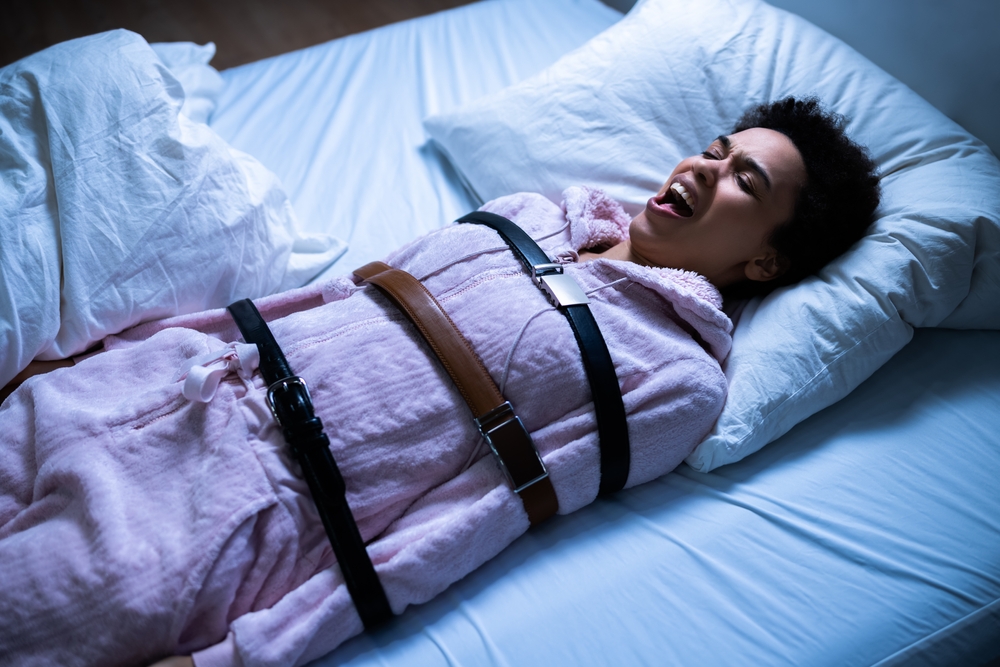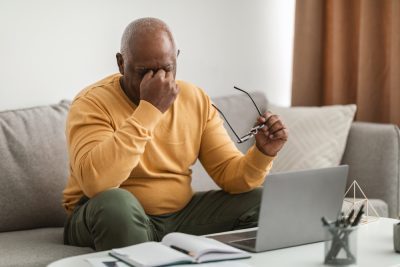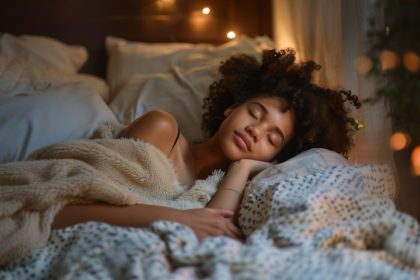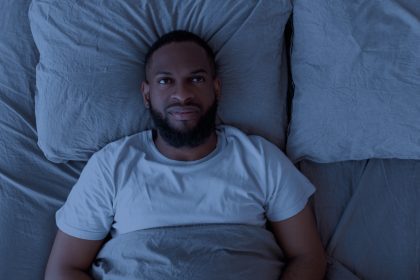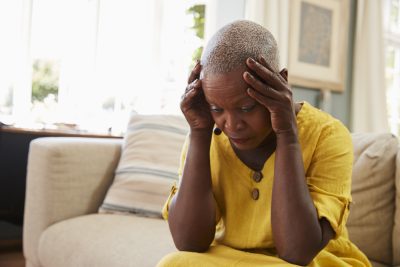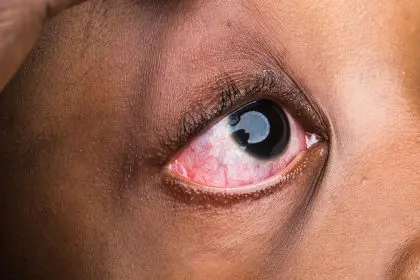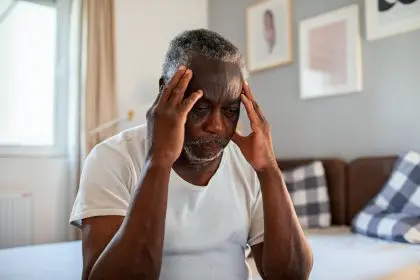Imagine awakening to find yourself completely unable to move or speak, perhaps feeling intense pressure on your chest, struggling to breathe, or even seeing strange figures in your bedroom. This terrifying experience describes sleep paralysis, a sleep disorder that occurs during transitions between wakefulness and sleep. While deeply unsettling, this temporary disconnection between mind and body offers fascinating insights into how our brains regulate consciousness and movement.
The paralysis experience
Sleep paralysis manifests as a temporary inability to move or speak while falling asleep or waking up. These episodes typically last from a few seconds to several minutes, though they may feel significantly longer to those experiencing them. During these events, people remain fully conscious and aware of their surroundings despite their physical immobility.
The experience often includes several distinctive symptoms beyond the inability to move. Many people report feeling intense pressure on their chest, creating a sensation of suffocation or difficulty breathing. Some describe feeling as though someone or something is sitting on their chest, restricting their ability to inhale fully.
Perhaps most disturbing, approximately 75% of sleep paralysis episodes include vivid hallucinations. These perceptions differ significantly from regular dreams, appearing superimposed on the actual bedroom environment rather than occurring in a separate dreamscape. Common hallucinations include sensing a malevolent presence in the room, seeing shadowy figures, or feeling bodily sensations like floating or being touched.
Scientific understanding
Researchers attribute sleep paralysis to disruptions in the rapid eye movement sleep cycle. During normal REM sleep, the brain temporarily paralyzes most muscles to prevent physical acting out of dreams. Sleep paralysis occurs when aspects of REM sleep persist into wakefulness or begin before consciousness fully fades.
This mixed state creates the unique condition where the mind awakens while the body remains under the muscle-inhibiting effects of REM sleep. Brain imaging studies show unusual patterns of activity during these episodes, with parts of the brain associated with wakefulness activating while sleep-related neural patterns continue.
Genetic factors appear to play a role in susceptibility to sleep paralysis, with the condition sometimes running in families. Studies examining identical twins show higher concordance rates than in fraternal twins, suggesting hereditary influences on how the brain regulates sleep-wake transitions.
Hallucination types
Sleep paralysis often includes two distinct types of hallucinatory experiences, categorized by when they occur in the sleep cycle. Understanding these differences helps distinguish sleep paralysis from other sleep disturbances.
Hypnagogic hallucinations occur as a person falls asleep, affecting approximately 37% of those who experience sleep paralysis. These typically involve visual perceptions such as geometric patterns, faces, or complete environmental scenes. Unlike dreams, these hallucinations rarely include narrative elements or conversations, instead presenting as static or briefly animated visual experiences.
Hypnopompic hallucinations happen during the transition from sleep to wakefulness, affecting about 12% of sleep paralysis experiencers. While also predominantly visual, these hallucinations sometimes include auditory elements or physical sensations like falling or floating. Both types feel exceptionally vivid and often induce significant fear or anxiety.
Related sleep phenomena
Sleep paralysis shares characteristics with several other sleep disturbances but remains distinct in important ways. Understanding these differences helps clarify diagnosis and appropriate management approaches.
Lucid dreaming, though sometimes confused with sleep paralysis, represents a fundamentally different phenomenon. While both involve unusual states of consciousness, lucid dreaming occurs entirely within REM sleep and typically includes awareness that one is dreaming, sometimes with the ability to control dream content. Unlike sleep paralysis, lucid dreaming does not involve waking consciousness or feelings of immobility.
Narcolepsy, a chronic sleep disorder characterized by excessive daytime sleepiness, frequently includes sleep paralysis as a symptom. However, most people who experience sleep paralysis do not have narcolepsy. When sleep paralysis occurs frequently and alongside other symptoms like sudden muscle weakness triggered by emotions, medical evaluation for narcolepsy becomes important.
Who experiences sleep paralysis
Sleep paralysis affects approximately 20% of people at some point in their lives, with episodes typically beginning during adolescence and often continuing into the twenties and thirties. The condition appears across diverse populations worldwide, though cultural interpretations of the experience vary significantly.
Certain factors increase vulnerability to episodes. Sleep deprivation stands as perhaps the most significant risk factor, with irregular sleep schedules also playing an important role. Sleeping in a supine position appears to increase likelihood of episodes, with studies showing significantly higher rates of sleep paralysis among back sleepers.
Mental health conditions correlate strongly with increased incidence of sleep paralysis. People with anxiety disorders, post-traumatic stress disorder, or panic disorder experience sleep paralysis at higher rates than the general population. These conditions may disrupt normal sleep architecture, creating more opportunities for sleep-wake state dissociation.
Medical assessment
While occasional episodes rarely warrant medical intervention, certain patterns indicate the need for professional evaluation. Frequent episodes that cause significant anxiety or sleep avoidance, extreme daytime fatigue resulting from disrupted sleep, or paralysis episodes occurring alongside other unusual sleep symptoms all justify consultation with a healthcare provider.
Diagnosis typically begins with a comprehensive sleep history, sometimes including sleep diaries to track patterns and potential triggers. Medical history review focuses particularly on mental health conditions, substance use, and family history of sleep disorders that might contribute to episodes.
In some cases, referral to a sleep specialist leads to overnight sleep studies that monitor brain activity, eye movements, muscle tension and other physiological parameters during sleep. These studies help distinguish sleep paralysis from other sleep disorders and can identify underlying conditions like narcolepsy that require specific treatment.
Management approaches
Medical treatment specifically targeting sleep paralysis remains limited, with research on interventions still developing. However, addressing underlying factors and associated conditions often reduces episode frequency and severity.
Improving sleep hygiene represents the cornerstone of management. Maintaining consistent sleep schedules, even on weekends, helps regulate sleep cycles that prevent paralysis episodes. Creating relaxing bedtime routines, minimizing screen time before bed, and avoiding caffeine and alcohol in the evening further supports healthy sleep architecture.
For people with anxiety surrounding bedtime due to fear of episodes, cognitive behavioral therapy offers valuable tools for managing stress responses. These techniques help reduce the psychological impact of episodes and minimize anxiety that might trigger or worsen sleep paralysis experiences.
Coping with active episodes
While experiencing sleep paralysis, certain approaches may help shorten episodes or reduce their emotional impact. Though scientific validation remains limited, many people report success with specific strategies during paralysis events.
Focusing attention on small movements may help break the paralysis state. Attempting to wiggle fingers or toes, areas where paralysis sometimes manifests less strongly, potentially helps reestablish normal muscle control. Similarly, concentrating on controlling breathing patterns provides both a focusing strategy and helps manage anxiety during episodes.
Psychological techniques like reminding oneself about the temporary nature of the episode and its physiological explanation can reduce fear responses. Some experts recommend maintaining relaxation rather than fighting against the paralysis, as the struggle often increases anxiety without shortening the episode.
Safety and seriousness
Despite its frightening nature, sleep paralysis itself poses no direct physical danger. The sensation of breathing difficulty results from chest muscle paralysis rather than actual respiratory compromise. Similarly, hallucinations, while disturbing, cannot physically harm the experiencer.
However, for approximately 10% of affected individuals, recurrent episodes create significant psychological distress. This ongoing anxiety can lead to sleep avoidance, insomnia, and consequent health problems related to sleep deprivation. In these cases, the indirect effects of sleep paralysis on overall wellbeing warrant medical attention.
When sleep paralysis appears alongside other symptoms like excessive daytime sleepiness, sudden muscle weakness during emotional situations, or significant disruption of nighttime sleep, it may indicate underlying conditions requiring treatment. Conditions like narcolepsy, anxiety disorders, or PTSD often include sleep paralysis as one component of a broader symptom pattern.
Cultural perspectives
Across cultures and throughout history, sleep paralysis experiences have generated rich interpretations reflecting diverse worldviews. Many traditional explanations involve supernatural entities like demons, spirits, or witches causing the paralysis and associated sensations.
In Newfoundland culture, the term “old hag” describes a witch believed to sit on sleepers’ chests, causing paralysis and breathing difficulty. Similar concepts appear in numerous cultures, from the Japanese kanashibari to the Egyptian jinn, each providing cultural frameworks for understanding the strange dissociation between consciousness and physical control.
Modern scientific explanations offer physiological understanding without diminishing the profound subjective impact of these experiences. Recognizing both the neurological basis and the powerful psychological reality of sleep paralysis helps validate the experiences of those affected while providing practical approaches to management.
Understanding sleep paralysis as a natural, if unsettling, neurological phenomenon helps reduce the fear and mystification surrounding these episodes. For most people who experience occasional sleep paralysis, this knowledge, combined with good sleep practices, proves sufficient to manage the condition without significant life disruption.

